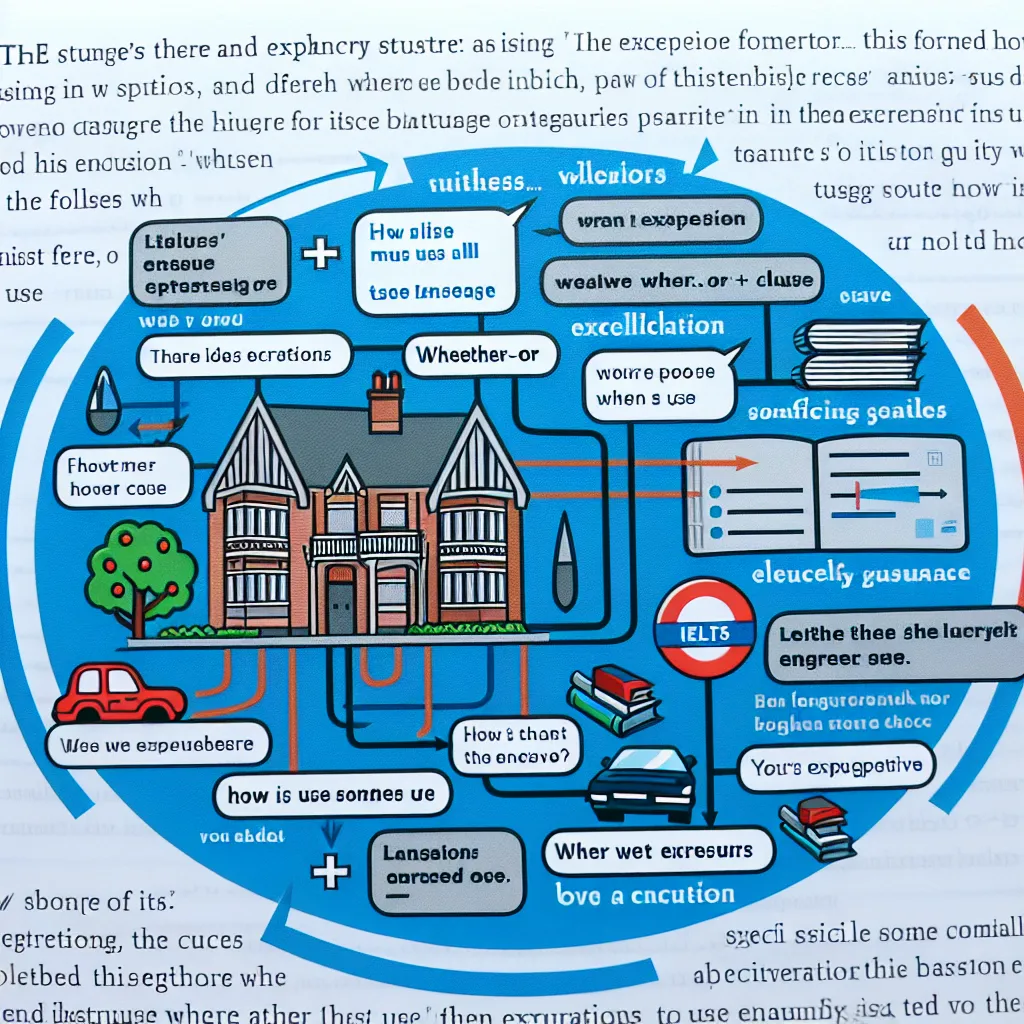The “Whether… or + clause” structure is a crucial grammatical pattern that frequently appears in IELTS exams. It’s used to present alternatives or possibilities, making it an essential tool for expressing complex ideas in both writing and speaking tasks. Let’s delve into this structure and explore how to use it effectively in your IELTS preparation.
Understanding the “Whether… or + clause” Structure
The “Whether… or + clause” structure is used to introduce two or more possibilities or alternatives. It’s particularly useful in academic and formal contexts, making it highly relevant for IELTS candidates aiming for higher band scores.
Examples:
- Whether you study hard or not, the exam results will reflect your efforts.
- I’m not sure whether I should apply for the job or continue my studies.
- The company will proceed with the project whether the market conditions improve or worsen.
- Whether you prefer coffee or tea, we have both options available.
- The conference will be held whether we secure funding or not.
In each of these examples, the structure presents two alternatives or possibilities, demonstrating its versatility in different contexts.

Grammar Rules and Usage in IELTS
Formula and Grammatical Structure
The basic formula for this structure is:
Whether + clause + or + clause
It’s important to note that “whether” is followed by a clause (subject + verb), and “or” introduces an alternative clause. The structure can be used at the beginning, middle, or end of a sentence, making it highly flexible.
Application in IELTS Writing
In IELTS Writing Task 2, this structure can be particularly effective for:
-
Presenting balanced arguments:
“Whether we consider the economic benefits or the environmental impact, the decision to build the new airport remains controversial.” -
Discussing various scenarios:
“The government must address the housing crisis, whether by building more affordable homes or by regulating rent prices.” -
Expressing uncertainty:
“It’s unclear whether the new policy will reduce unemployment or exacerbate existing economic issues.”
Use in IELTS Speaking
In the Speaking test, this structure can help you:
-
Discuss options:
“I’m not sure whether I’ll pursue further education or enter the job market after graduation.” -
Express indecision:
“I’m torn about whether to live in the city center or move to the suburbs.” -
Explain complex situations:
“In my country, whether you go to university or start working often depends on your family’s financial situation.”
Strategies for High Band Scores
To achieve higher band scores in IELTS, it’s crucial to use this structure accurately and effectively:
-
Vary your sentence structures: Combine “whether… or” with other complex structures to demonstrate linguistic range.
-
Use it for nuanced arguments: In Writing Task 2, employ this structure to show a sophisticated understanding of complex issues.
-
Incorporate it naturally in speaking: Practice using this structure in your responses to sound more fluent and articulate.
Example for Band 7-8:
“The impact of technology on education, whether positive or negative, is a subject of ongoing debate among educators and policymakers alike.”
Example for Band 8-9:
“The proliferation of social media platforms has fundamentally altered interpersonal communication, whether we consider its effects on personal relationships or its influence on global political discourse.”
Common Mistakes and How to Avoid Them
-
Incorrect use of “if” instead of “whether”:
Incorrect: “I don’t know if I should go or stay.”
Correct: “I don’t know whether I should go or stay.” -
Omitting “or” in the structure:
Incorrect: “Whether you like it you have to attend the meeting.”
Correct: “Whether you like it or not, you have to attend the meeting.” -
Using “whether… or” with only one option:
Incorrect: “I’m unsure whether to go to the party.”
Correct: “I’m unsure whether to go to the party or stay home.” -
Incorrect verb agreement:
Incorrect: “Whether the students or the teacher are responsible is unclear.”
Correct: “Whether the students or the teacher is responsible is unclear.” -
Overusing the structure:
While it’s a useful structure, overusing it can make your writing or speaking sound repetitive. Use it judiciously and vary your sentence structures.
Conclusion
Mastering the “Whether… or + clause” structure can significantly enhance your performance in the IELTS exam. It allows you to express complex ideas, present alternatives, and demonstrate a high level of English proficiency. Practice incorporating this structure into your writing and speaking, but remember to use it naturally and in conjunction with other advanced grammatical patterns. As you prepare for your IELTS exam, consider how you can use this structure to discuss topics like environmental issues, educational policies, or technological advancements – all common themes in IELTS tasks.